Shanghai, often referred to as the "Paris of the East," is a dynamic international metropolis situated on China's eastern coast. Its captivating fusion of modern sophistication and traditional allure makes it a magnet for visitors. Take 1-2 days to explore Shanghai's top attractions, including the iconic Bund, enchanting Yu Garden, and the breathtaking skyline adorned with towering skyscrapers. To experience the complete charm of Shanghai, consider venturing to nearby water towns like Zhujiajiao.
Beyond the well-trodden tourist paths, there are numerous alternative ways to discover the city. Embark on a cycling adventure, leisurely city walk on the bustling streets, or indulge in a captivating night tour. For a more immersive experience, you can even combine your Shanghai trip with visits to neighboring cities such as Hangzhou and Suzhou, each offering its own unique attractions and cultural delights.
Before embarking on your journey to Shanghai, familiarize yourself with these 10+ essential travel tips and frequently asked questions (FAQs). You will find valuable information about the best time to visit, transportation options, local recommendations, culinary delights, and cultural activities. By adequately preparing yourself, you will have the opportunity to fully immerse in Shanghai's distinctive blend of culture, rapid modernization, and rich history, ensuring an unforgettable experience during your visit in Shanghai.
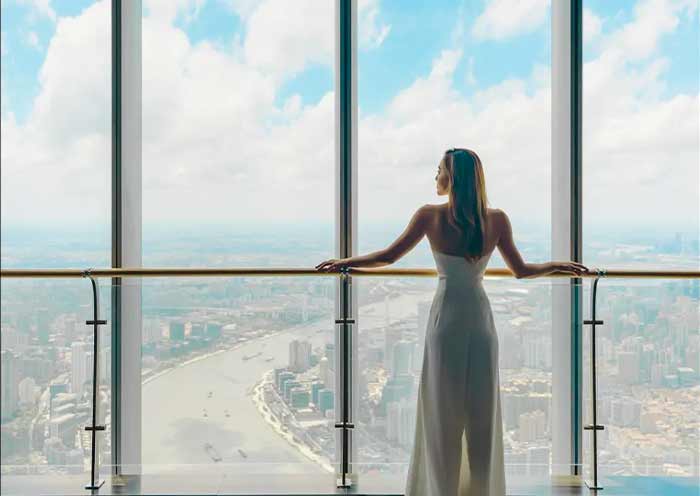
"Excellent Tour, best experience"
"A unique experience despite a difficult context thanks
to an experience team of organisers"
1. Will language be a problem in Shanghai?+
While Mandarin Chinese is the official language in Shanghai and throughout China, English is becoming more widely spoken in major cities like Shanghai, especially among younger generations and those working in the tourism industry. However, it's important to note that the level of English proficiency can vary among individuals.
In popular tourist areas, hotels, upscale restaurants, and larger shopping centers in Shanghai, you can usually find staff members who can communicate in English to some extent. Many signs, menus, and transportation announcements also have English translations. Additionally, Shanghai has been investing in English language education and promoting bilingualism to support international visitors.
However, it's still advisable to be prepared for language barriers, especially when interacting with locals outside of tourist areas or when venturing into smaller local establishments. It can be helpful to learn a few basic Mandarin phrases or carry a translation app to assist with communication.
If you require assistance or have specific needs, consider using the services of a local guide or interpreter who can facilitate your interactions and help navigate language challenges.
Overall, while English is gradually becoming more prevalent in Shanghai, it's wise to be patient, flexible, and open to non-verbal communication to overcome any language barriers you may encounter during your visit.
2. When is the best time to visit Shanghai?+
The best time to visit Shanghai is during the spring (April to May) and autumn (September to November) seasons. These periods offer pleasant temperatures, moderate humidity, and fewer chances of rain compared to other times of the year. Here's a breakdown of the seasons in Shanghai:
1) Spring (April to May): Spring in Shanghai brings mild temperatures, blossoming flowers, and vibrant greenery. It's an ideal time for outdoor activities and exploring the city's parks and gardens. However, do note that April can be a bit unpredictable with occasional rain showers.
2) Summer (June to August): Shanghai's summer is hot and humid, with temperatures often exceeding 30°C (86°F). It can be uncomfortable for outdoor activities, and the city experiences frequent rain showers and occasional typhoons. If you visit during summer, be prepared for high humidity and consider indoor attractions and air-conditioned spaces.
3) Autumn (September to November): Autumn is considered the best time to visit Shanghai. The weather is pleasant, with cooler temperatures and lower humidity. It's a great time for sightseeing, strolling along the waterfront, and enjoying outdoor activities. However, early autumn (September) can still be a bit warm, so be prepared for some lingering summer-like weather.
3) Winter (December to February): Shanghai's winter is chilly and damp, with occasional cold spells. Temperatures can drop to around 0°C (32°F), but snowfall is rare. Winter is a quieter time in Shanghai, and you can enjoy fewer crowds and lower hotel rates. It's a good time to explore indoor attractions, visit museums, and experience traditional Chinese New Year celebrations if your visit coincides with late January or early February.
3. What is Shanghai cuisine and where can I find them?+
Shanghai cuisine, also known as Hu cuisine, is a prominent culinary style in China known for its delicate flavors, emphasis on freshness, and meticulous cooking techniques. Here are some popular Shanghai dishes you should try and where you can find them in Shanghai:
1) Xiaolongbao (小笼包): These steamed soup dumplings are a Shanghai specialty. The delicate dumpling skins encase a flavorful filling with a burst of hot, savory soup. You can find excellent Xiaolongbao at renowned establishments like Nanxiang Steamed Bun Restaurant and Jia Jia Tang Bao.
2)Shengjianbao (生煎包): Similar to Xiaolongbao, Shengjianbao are pan-fried soup dumplings. They have a crispy bottom and a juicy filling. Yang's Fry-Dumpling and Jia Jia Tang Bao are popular spots to savor this local favorite.
3)Lion's Head Meatballs (狮子头): Lion's Head Meatballs are large, tender meatballs made from a mixture of ground pork, water chestnuts, and seasonings. They are usually braised in a savory sauce and served with vegetables. You can find them at local Shanghainese restaurants like Jesse Restaurant and Fu 1088.
4)Shanghai Fried Noodles (阳春面): Shanghai-style fried noodles, known as Yangchun noodles, are stir-fried noodles with a light sauce. They are often topped with a variety of ingredients like pork, shrimp, and vegetables. Try them at renowned noodle shops such as Lao Zheng Xing and Da Hu Chun.
5)Drunken Crab (醉蟹): This seasonal delicacy involves marinating fresh crabs in rice wine or Shaoxing wine. The crabs are then steamed to perfection. For an authentic experience, visit restaurants like Fu Chun Xiaolong and Songyue Lou during the crab season (usually autumn).
6)Braised Pork Belly (红烧肉Hongshao Rou): This dish features succulent pork belly braised in a fragrant sauce, resulting in tender and flavorful meat. You can savor this classic dish at renowned Shanghainese restaurants like Lvbolang and Yangzhou Restaurant.
4. What are the nearby cities or attractions around Shanghai?+
Absolutely! Shanghai is surrounded by several fascinating destinations that make for great Shanghai day trips or short getaways. Here are some interesting places near Shanghai worth exploring:
1). Suzhou (苏州): Known as the "Venice of the East," Suzhou is renowned for its classical gardens, tranquil canals, and charming water towns. Visit the Humble Administrator's Garden, Tiger Hill, and explore the picturesque water town of Tongli.
2). Hangzhou (杭州) : Just a short train ride away, Hangzhou offers scenic beauty with its iconic West Lake, historic temples, and tea plantations. Don't miss the chance to sample the famous Longjing tea.
3). Zhouzhuang (周庄): This ancient water town near Shanghai is famous for its well-preserved Ming and Qing Dynasty architecture. Take a boat ride along the canals, visit historic residences, and immerse yourself in the town's rich cultural heritage.
4). Nanjing (南京): As the capital of Jiangsu Province, Nanjing is steeped in history and offers a wealth of cultural attractions. Explore the magnificent Sun Yat-sen Mausoleum, walk along the ancient city walls, and visit the Confucius Temple.
5). Wuzhen (乌镇): Another charming water town, Wuzhen showcases traditional architecture, stone bridges, and serene canals. Take a leisurely stroll through its ancient alleyways and experience the town's timeless beauty.
6). Huangshan (黄山)Yellow Mountain: If you're up for a longer trip, consider visiting Huangshan, one of China's most iconic mountain ranges. Marvel at its dramatic peaks, hike scenic trails, and witness breathtaking sunrises or sunsets.
5. How many days is enough for a Shanghai tour?+
The number of days you should spend in Shanghai depends on your interests, the activities you plan to undertake, and the pace at which you prefer to explore the city. However, a suggested duration for a well-rounded visit to Shanghai is around 1 to 5 days. This time frame allows you to experience the city's major attractions, delve into its rich culture, and also have some time for day trips to nearby destinations. Contact us to tailor your Shanghai Tour according to your interests and the experiences you seek.
Here's a sample itinerary to give you an idea:
Day 1: Explore the Bund, visit Shanghai Museum, wander along Nanjing Road, and enjoy the vibrant atmosphere of the city center. In the evening, take a Huangpu River cruise to admire the illuminated skyline.
Day 2: Discover the traditional side of Shanghai by visiting Yu Garden, City God Temple, and exploring the charming alleys of Tianzifang or Xintiandi. Indulge in local cuisine and experience Shanghai's vibrant street food scene.
Day 3: Take a day trip to a nearby water town such as Suzhou or Zhouzhuang, where you can experience the classical gardens, historic architecture, and tranquil canals.
Day 4: Visit modern landmarks like the Shanghai Tower, Shanghai World Financial Center, and the Shanghai Urban Planning Exhibition Center to gain insight into the city's futuristic development. Explore the trendy district of Jing'an or French Concession for shopping and dining.
Day 5: If you have an extra day, consider another day trip to Hangzhou to visit the stunning West Lake, and Lingyin Temple, and experience the famous Longjing tea culture.
Of course, you can adjust this itinerary based on your preferences and the specific attractions you wish to prioritize. Shanghaihas a lot to offer, including museums, art galleries, markets, parks, and a vibrant nightlife scene. So, the more time you have, the more you can explore and immerse yourself in the city's diverse offerings.
6. What is Shanghai most known for?+
Shanghai is known for several notable features that have contributed to its international reputation. Shanghai is a global metropolis that seamlessly blends tradition and modernity while offering a unique and dynamic experience for visitors. Here are some of the key aspects for which Shanghai is most renowned:
1). Modern Skyline: Shanghai is famous for its iconic modern skyline, dominated by towering skyscrapers and futuristic architecture. The Pudong district, particularly the Lujiazui area, is home to landmarks like the Oriental Pearl Tower, Shanghai Tower, Jin Mao Tower, and the Shanghai World Financial Center. These structures create an awe-inspiring panorama that has become synonymous with the city.
2). The Bund: The Bund is a historic waterfront area along the Huangpu River that showcases Shanghai's blend of Eastern and Western influences. It features grand colonial-era buildings on one side and the modern skyline on the other, creating a distinctive contrast that encapsulates the city's past and present.
3). Economic and Financial Hub: As China's leading economic and financial center, Shanghai plays a crucial role in global commerce and trade. It houses the Shanghai Stock Exchange, and numerous multinational corporations, and serves as a vital business hub attracting professionals and entrepreneurs from around the world.
4). Art and Culture: Shanghai has a vibrant arts and culture scene, with numerous galleries, museums, and theaters. The Shanghai Museum, China Art Museum, and the Power Station of Art are notable institutions that showcase Chinese art, history, and contemporary works. The city also hosts various international events, including the Shanghai International Film Festival and the Shanghai International Arts Festival.
5). Cosmopolitan Lifestyle: Shanghai is renowned for its cosmopolitan vibe and diverse international community. It offers a rich blend of Eastern and Western cultures, reflected in its fashion, cuisine, nightlife, and entertainment options. The city boasts a thriving dining scene, luxury shopping districts, trendy neighborhoods, and a bustling nightlife.
6). Historical and Cultural Sites: Shanghai's history and culture are showcased in its ancient temples, traditional gardens, and historic neighborhoods. Places like Yu Garden, Jing'an Temple, Longhua Temple, and the Old Town area provide glimpses into Shanghai's past and offer a contrast to its modern developments.
7. What to see in Shanghai? What are the top attractions of Shanghai?+
Shanghai, one of China's most vibrant and cosmopolitan cities, offers a plethora of attractions for visitors to explore. The city is ever-evolving, with new attractions and experiences constantly emerging. Exploring Shanghai will give you a taste of China's past, present, and future all in one dynamic city. Here are some of the must-see sights and the top attractions in Shanghai:
1). The Bund - Historic waterfront promenade with stunning skyline views.
2). Nanjing Road - Bustling shopping street with a mix of modern and traditional shops.
3). Yu Garden - Classic Chinese garden with beautiful architecture and landscapes.
4). Oriental Pearl Tower - Iconic tower offering panoramic views of the city.
5). Jin Mao Tower - Skyscraper with observation decks showcasing Shanghai's skyline.
6). Shanghai Museum - Extensive collection of Chinese art and artifacts.
7). Tianzifang - Artsy district with shops, galleries, and cafes in restored Shikumen houses.
8). Shanghai World Financial Center - Distinct tower with an observation deck on the 100th floor.
9). Xintiandi - Trendy area featuring a blend of historic Shikumen houses and modern establishments.
10). Zhujiajiao Water Town - Picturesque water town outside Shanghai, known for its canals and bridges.
8. Why Shanghai is famed as "Magic City"?+
Shanghai is often referred to as the "Magic City" due to its rapid and remarkable transformation over the past few decades. The nickname encompasses the awe-inspiring development, modernization, and growth that the city has experienced, making it a symbol of China's economic success and urban innovation. Here are a few reasons why Shanghai is famed as the "Magic City":
1). Economic Powerhouse: Shanghai has become a global financial and economic hub, attracting businesses, investments, and talent from around the world. It has a thriving economy, with a strong focus on finance, trade, technology, and innovation. The city's rapid economic growth and transformation have been nothing short of magical.
2). Modern Skyline: Shanghai's skyline is truly mesmerizing. Pudong, the district on the east bank of the Huangpu River, is known for its iconic skyscrapers, including the Oriental Pearl Tower, Jin Mao Tower, and Shanghai Tower. These futuristic structures, along with the dazzling lights and architectural marvels, contribute to the magical image of the city.
3). Urban Development: Shanghai has undergone extensive urban development and urbanization, with massive infrastructure projects, modern transportation systems, and urban planning initiatives. The city has transformed vacant land and old industrial areas into modern districts, parks, and cultural spaces, creating a sense of magic and wonder.
4). Cultural Fusion: Shanghai is a melting pot of different cultures, blending traditional Chinese heritage with international influences. The city's history as a colonial port has left a lasting impact, reflected in its architecture, cuisine, and diverse population. The fusion of Eastern and Western cultures adds to the enchantment and cosmopolitan charm of Shanghai.
5). Vibrant Lifestyle: Shanghai is known for its dynamic and vibrant lifestyle. The city offers a rich and diverse range of entertainment, dining, shopping, and nightlife options. The bustling streets, trendy neighborhoods, and a constant buzz of energy contribute to the magical allure of the city.
9. Any suggestions for a city walk in Shanghai?+
Certainly! Shanghai is a great city for exploring on foot, and there are several areas that offer fantastic city walks. Here are some suggestions for a city walk in Shanghai:
1). The Bund: Start your city walk at the iconic Bund. Take a stroll along the waterfront promenade and admire the historic buildings on one side and the modern skyline of Pudong on the other. The Bund offers beautiful views of the Huangpu River and is especially enchanting in the evening when the buildings are illuminated.
2). Nanjing Road: From the Bund, head towards Nanjing Road, one of the world's busiest shopping streets. Walk along this bustling pedestrian street and soak in the vibrant atmosphere. Along the way, you'll find a mix of shops, department stores, restaurants, and street food vendors.
3). French Concession: Explore the charming streets of the French Concession, known for its tree-lined avenues, European architecture, and trendy boutiques. Wander through the leafy Fuxing Park, stroll along Huaihai Road, and explore the alleyways filled with hidden cafes, galleries, and boutiques.
4). Xintiandi: Located in the heart of the city, Xintiandi is a trendy area that blends historic Shikumen architecture with modern establishments. Take a leisurely walk through the narrow lanes, lined with stylish shops, cafes, and restaurants. Admire the unique blend of old and new Shanghai.
5). Tianzifang: Another artsy and vibrant area, Tianzifang, is a maze of narrow alleyways filled with boutique shops, art galleries, and cozy cafes. Explore the labyrinthine streets, browse through unique handicrafts, and enjoy a cup of tea or coffee in this creative district.
These are just a few suggestions for city walks in Shanghai. Contact us to join our tour with Shanghai city walk.
10. Where is Shanghai? Is Shanghai a Jiangnan city?+
Shanghai is located on the eastern coast of China, at the mouth of the Yangtze River. It is situated in the eastern part of the country, within the region known as the Yangtze River Delta.
Shanghai is a Jiangnan city. Jiangnan refers to the region south of the Yangtze River, and it includes cities and provinces such as Shanghai, Jiangsu (Suzhou), Zhejiang (Hangzhou), and Anhui (Huangshan). Shanghai is located in the Jiangnan region and shares many cultural and historical characteristics with other cities in the area.
Jiangnan is known for its picturesque landscapes, water towns, classical gardens, and rich cultural heritage. Shanghai, being part of the Jiangnan region, exhibits elements of this cultural heritage through its traditional architecture, gardens, and its historical connection to the waterways and canals that were important for trade and transportation in the past.
Contact us to join our tour with Jiangnan cities including Shanghai.
11. What cities can I visit around Shanghai by train?+
Shanghai is well-connected to several cities in China via high-speed train, making it convenient to explore nearby destinations. Here are a few cities you can visit from Shanghai by high-speed train:
1). Suzhou: Known as the "Venice of the East," Suzhou is famous for its classical gardens, canals, and traditional architecture. It's a short journey from Shanghai, with frequent high-speed trains taking around 30 minutes to 1 hour to reach Suzhou.
2). Hangzhou: As mentioned earlier, Hangzhou is a historical and cultural city with attractions like West Lake, Lingyin Temple, and the China National Tea Museum. High-speed trains from Shanghai to Hangzhou take around 1 to 1.5 hours, making it an ideal day trip or overnight excursion.
3). Beijing: If you're interested in visiting China's capital, Beijing, you can take a high-speed train from Shanghai. The journey takes around 4 to 6 hours, depending on the type of train you choose. Beijing offers iconic landmarks like the Great Wall, the Forbidden City, and the Temple of Heaven.
4). Nanjing: Located along the Yangtze River, Nanjing is known for its historical sites and cultural heritage. You can reach Nanjing from Shanghai by high-speed train in about 1.5 to 3 hours. Must-visit attractions in Nanjing include the Sun Yat-sen Mausoleum, the Nanjing City Wall, and the Confucius Temple.
These are just a few examples of cities you can visit from Shanghai by high-speed train. China's extensive high-speed rail network provides convenient and efficient transportation, allowing you to explore various destinations within a reasonable travel time from Shanghai. Contact us to join our tour with bullet trains from Shanghai.
12. Can I take a ferry in Shanghai like locals?+
Yes, you can take a ferry in Shanghai just like the locals do. Shanghai has several ferry routes that traverse the Huangpu River, providing an alternative mode of transportation and a scenic way to explore the city. Riding the ferry can be a unique experience and a great opportunity to see iconic landmarks from the water.
One popular ferry route is departing from Jinling East Road. The Huangpu River Ferry Ride takes about 10 minutes, departing from Jinling East Road Pier (near the Bund) and arriving at Dongchang Road Pier (near the Shanghai Tower). Since the ferry operates every 15 minutes in the afternoon, including the queuing time, it will take about 40 to 60 minutes to experience the Shanghai Public Ferry (2 yuan per person上海轮渡) like a local and enjoy the splendid views along Shanghai's Mother River.
Another ferry route is the Shiliupu Ferry, which operates between the Shiliupu Pier (near the Bund) and the Dongchang Road Pier (near the Oriental Pearl Tower). This route offers a more traditional ferry experience and allows you to enjoy the scenic views of the river and the city skyline.
Contact us to join our tour with Shanghai Ferry.
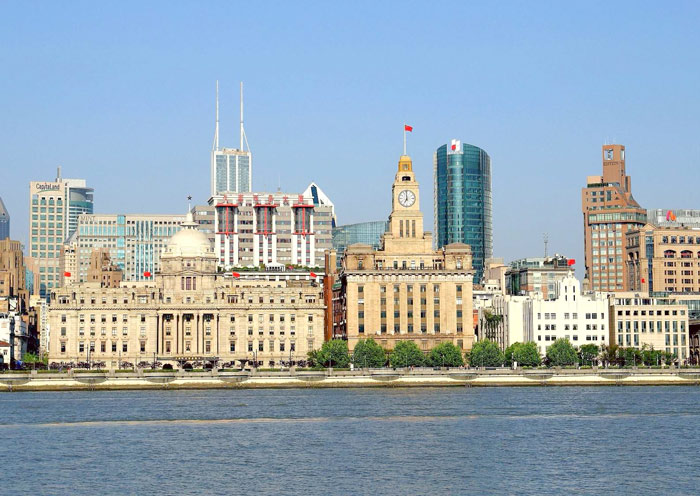
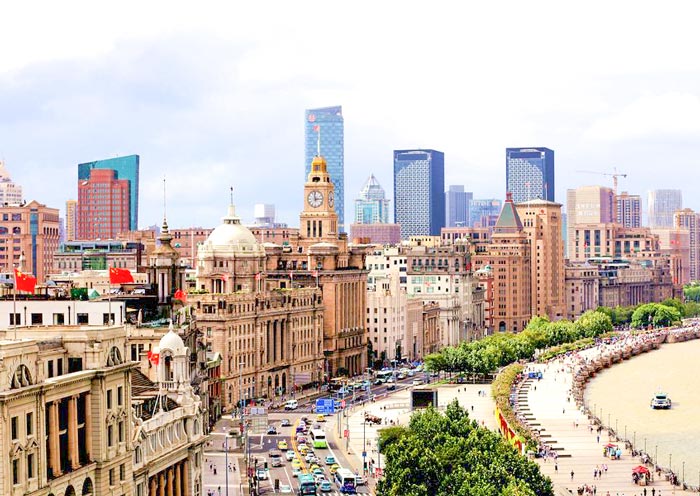
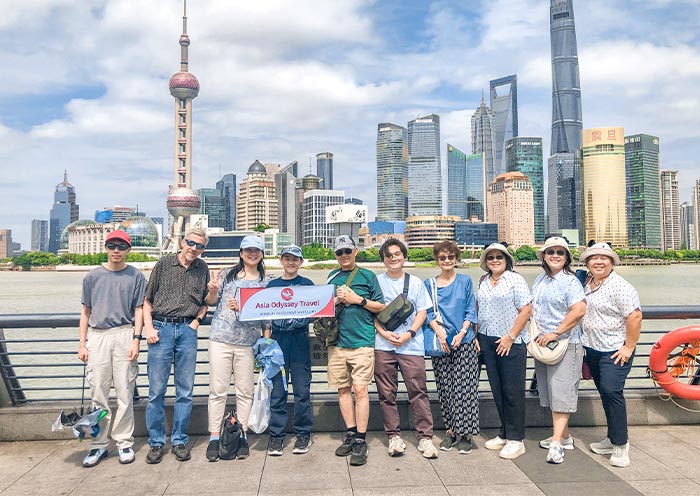
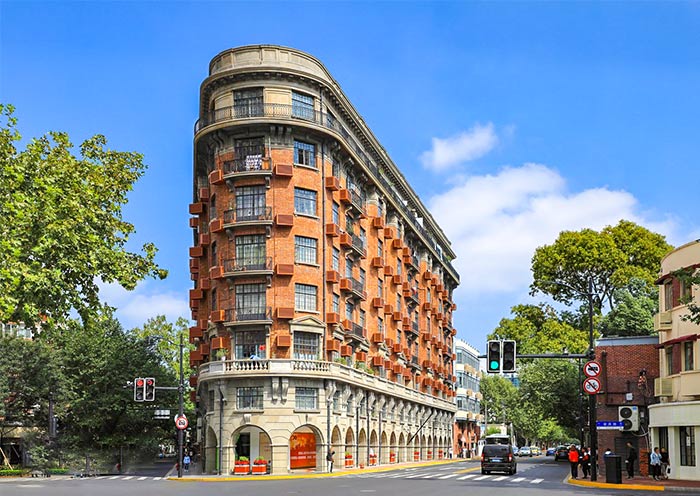
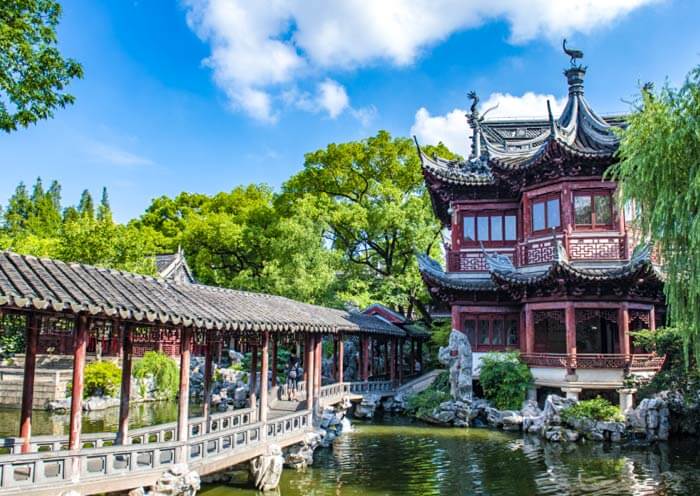
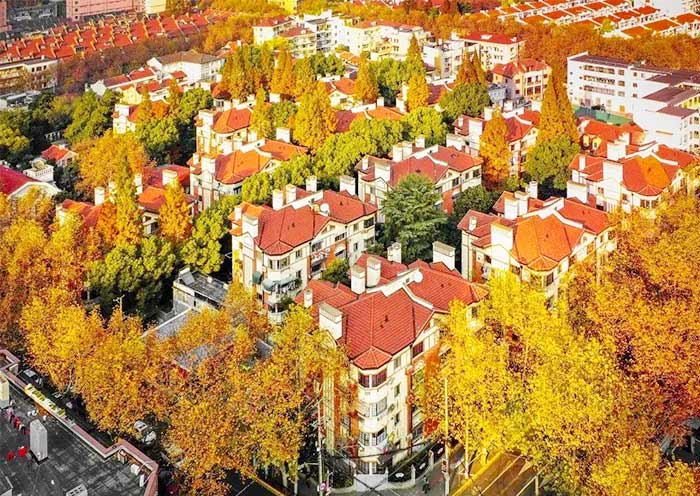
Create a tour based truly on your preferences, including all aspects of your travel in the destination